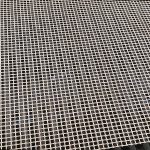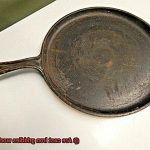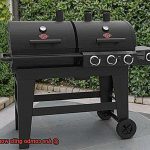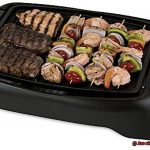As a grill enthusiast, you know that the right accessories can make all the difference in creating mouth-watering meals. And when it comes to enhancing your grilling game, two popular options are ceramic briquettes and lava rock. But which one reigns supreme?
While lava rock has long been a favorite among grill masters, ceramic briquettes have been gaining popularity in recent years. Both are designed to improve heat distribution and cooking performance, but they have some distinct differences worth considering.
Ceramic briquettes stand out for their impressive ability to retain heat and evenly distribute it across your grill’s surface. These durable ceramic blocks fit snugly onto your grill grates and hold their shape even after repeated use. Lava rocks, on the other hand, are porous volcanic stones that can break down over time, leading to uneven heat distribution and potentially dangerous flare-ups.
Of course, both options come with their own set of pros and cons. So how do you decide which one is right for you? In this post, we’ll dive into the features and benefits of ceramic briquettes versus lava rock so that you can make an informed decision based on your grilling needs. Get ready to elevate your grilling experience to new heights.
Contents
What are Ceramic Briquettes?
If you’re looking to take your grilling game to the next level, consider using ceramic briquettes in your gas grill. These small, porous pieces made of ceramic material are designed to replace lava rocks and offer a number of advantages over their traditional counterpart.
First and foremost, ceramic briquettes distribute heat evenly throughout the grill, ensuring that food is cooked evenly and reducing the likelihood of hot spots. They also retain heat well, allowing for food to be cooked at a lower temperature for a longer period of time. This is especially important when it comes to grilling meats, as it helps to ensure that the meat is cooked all the way through without becoming dry or overcooked.
In addition to their even heat distribution and heat retention capabilities, ceramic briquettes also reduce flare-ups. Flare-ups occur when fat drips onto the burners of a gas grill and ignites, causing flames to shoot up and potentially burning the food. Ceramic briquettes absorb the excess fat, reducing the likelihood of flare-ups and ensuring that your food is cooked safely.
Ceramic briquettes are also cost-effective in the long run since they can be reused for years before needing to be replaced. Unlike lava rocks which may need frequent replacement, ceramic briquettes provide a durable option for grill owners.
When it comes to shape and size, ceramic briquettes come in various options such as square, round, and pyramid-shaped. They are also easy to clean and maintain.
Advantages of Ceramic Briquettes
It’s time to upgrade from outdated lava rocks to the superior ceramic briquettes. As a knowledgeable expert on this topic, I can assure you that ceramic briquettes offer numerous advantages that make them a must-have for any grill master.
The most notable benefit of ceramic briquettes is their ability to distribute heat evenly. The unique shape and design of these briquettes allow for better heat retention and distribution, ensuring that your food is cooked to perfection every time. Say goodbye to hot spots and cold spots on your grill and hello to consistent heat throughout.
In addition to their even heat distribution, ceramic briquettes are also highly durable. While lava rocks need to be replaced frequently, ceramic briquettes can last for years with proper care. This makes them a cost-effective option in the long run, as you won’t have to keep buying new briquettes after every few grilling sessions.
But that’s not all. Ceramic briquettes also provide a cleaner grilling experience. Lava rocks tend to produce a lot of smoke and ash, which can be messy and difficult to clean up. Ceramic briquettes, on the other hand, produce less smoke and ash, making them easier to maintain and keep clean.
Finally, ceramic briquettes offer superior temperature control compared to lava rocks. The efficient heat retention of these briquettes allows for more precise temperature adjustments when cooking delicate foods that require exact temperatures.
Disadvantages of Ceramic Briquettes
While ceramic briquettes offer some undeniable benefits, there are also significant disadvantages to consider.
One of the main drawbacks of ceramic briquettes is their price. Compared to other grilling materials like lava rocks, they can be quite expensive. While they do provide even heat distribution and precise temperature control, this can be a considerable investment for frequent grillers who need to replace their briquettes regularly.
Another downside to ceramic briquettes is the maintenance they require. Being porous and absorbent, they tend to accumulate grease and debris over time. This can lead to flare-ups and affect the flavor of your food if not cleaned properly.
Moreover, ceramic briquettes are prone to breaking or cracking if dropped or mishandled. This can cause uneven heating on the grill surface, which can be frustrating for grillers who have invested in these pricey materials.
Lastly, some grillers may find that ceramic briquettes don’t retain heat as well as other materials like lava rocks. This can result in longer cooking times or unevenly cooked food.
What is Lava Rock?
As an expert on the subject, let me fill you in on all things lava rock and how it can take your grilling skills to the next level.
Firstly, let’s delve into what lava rock actually is. This popular material is created from solidified lava, giving it its distinctive porous structure. Its unique qualities make it an excellent heat diffuser in gas grills, distributing heat evenly and reducing flare-ups while retaining heat to cook food perfectly.
Lava rock is a cost-effective option for grillers on a budget, as it is widely available and reasonably priced. Plus, when heated, the rock emits infrared radiation that imparts a smoky flavor to your food, making it a favorite among grill enthusiasts.
However, there are some downsides to using lava rock. Over time, grease and debris can clog the pores of the rock, leading to uneven heating and potential flare-ups. It’s important to clean your lava rock regularly and replace it periodically to ensure optimal performance.
But don’t let that deter you. Lava rock remains a fantastic addition to your grilling setup and an affordable way to create perfectly cooked meals with that signature smoky flavor.
Of course, there are always alternatives to consider when it comes to grilling materials. For instance, ceramic briquettes offer precise temperature control and even heat distribution, making them an excellent choice for dedicated grillers seeking top-notch results.
Advantages of Lava Rock
Look no further than lava rock. This natural volcanic stone has been a beloved choice among grilling enthusiasts for many years, and for good reason. Let’s explore the advantages of using lava rock in your gas grill.
First and foremost, lava rock’s porous nature allows it to absorb and evenly distribute heat across your grill surface. This means no more hotspots or cold spots on your grill, ensuring that your food is cooked to perfection every time.
But that’s not all – lava rock also acts as a barrier between your food and the flames, reducing the risk of flare-ups that can char your food. This not only ensures that your food is cooked evenly but also makes for a safer grilling experience.
When it comes to cleaning up after a successful grilling session, lava rock is a breeze. Simply remove the rocks from your grill, clean them with a brush or sponge, and then rinse with water. You can even soak them in a solution of water and mild detergent for deeper cleaning. Lava rock is easy to maintain, so you can spend more time enjoying your delicious grilled creations.
And let’s talk about cost-effectiveness – lava rock is an affordable option for those who want to enjoy the benefits of a gas grill without breaking the bank. It is widely available and can be purchased in large quantities at a reasonable price.
Last but certainly not least, lava rock adds a smoky flavor to your food as it heats up, giving it that authentic grilled taste we all love. This flavor is enhanced when you use wood chips or chunks along with the lava rocks, allowing you to customize the taste of your grilled creations.
Disadvantages of Lava Rock
While it may seem like a natural and cost-effective solution, there are some significant disadvantages to using this volcanic material that can affect the quality of your grilling experience.
Firstly, lava rock does not distribute heat evenly. This means that it can create hot spots and cold spots on the grill, making it difficult to cook food evenly. In addition, lava rock is known to produce more flare-ups than other materials such as ceramic briquettes, which can be dangerous and ruin your food. It absorbs and retains grease, which can cause sudden bursts of flame.
Another significant disadvantage of using lava rock is that it is porous and can absorb grease and food particles, making it challenging to clean. Over time, the rock can become clogged with debris, affecting the performance of the grill. Additionally, lava rock has a limited lifespan and needs to be replaced regularly since it can become brittle, which affects its ability to distribute heat evenly.
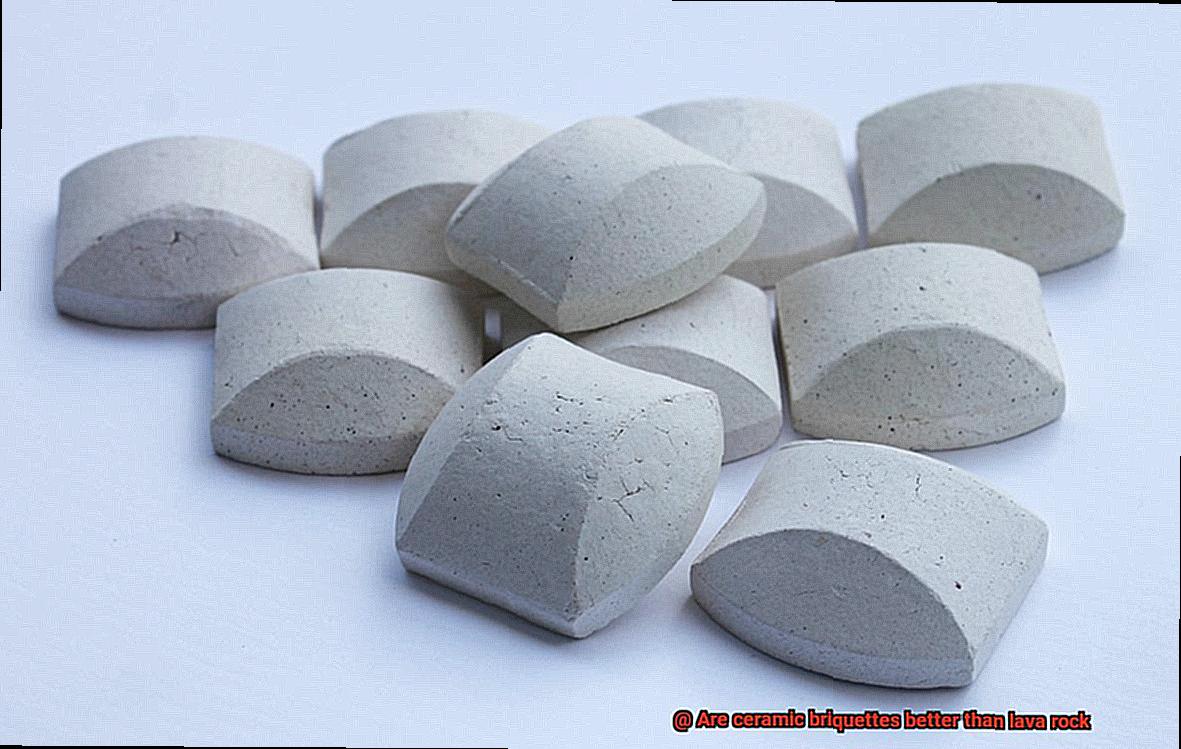
Lastly, using lava rock carries health risks. The volcanic material used to make these rocks can contain harmful chemicals and toxins that can release fumes when heated. These fumes can be harmful to your health if inhaled repeatedly over time.
Comparison Between Ceramic Briquettes and Lava Rock
First, let’s talk about ceramic briquettes. Made from high-quality ceramic materials, they sit on top of the gas burners in your grill and distribute heat evenly throughout. This means your food will cook evenly without any hot spots or cold areas. Ceramic briquettes also reduce flare-ups and retain heat, making them perfect for larger cuts of meat. While they can be more expensive, they tend to be more durable and long-lasting than lava rock.
On the other hand, lava rock is a volcanic rock often used as a heat diffuser in gas grills. It absorbs heat from the burners and radiates it back up through the grill grates, creating an even cooking surface and reducing flare-ups. Lava rock is generally cheaper and easier to replace than ceramic briquettes, although it may not provide as even of a cooking surface.
Ultimately, the choice between ceramic briquettes and lava rock comes down to personal preference. If you’re looking for evenly cooked food without hot spots or cold areas and are willing to invest in a durable, long-lasting option, ceramic briquettes may be the way to go. If you’re on a budget or prefer the look and feel of lava rock, that may be the better option for you.
To summarize:
- Ceramic briquettes distribute heat evenly, reduce flare-ups, and are durable but more expensive
- Lava rock absorbs heat and radiates it back up through the grill grates, creating an even cooking surface but may not be as durable or long-lasting
- The choice depends on personal preference and budget
Which One is Better?
As an expert on grilling, I’ve done extensive research on the two most popular options: ceramic briquettes and lava rock.
Ceramic briquettes are small, high-temperature resistant pieces made of ceramic that distribute heat evenly across the cooking surface. This ensures that your food is cooked thoroughly without hot spots or cold areas. Moreover, ceramic briquettes help to reduce flare-ups and maintain a consistent temperature throughout the cooking process.
On the other hand, lava rock is a natural volcanic stone used as a heat diffuser. It has the ability to absorb and distribute heat, but it does not provide the same level of even heat distribution as ceramic briquettes. However, lava rock adds a smoky flavor to your food that many grill enthusiasts adore.
So, which one is better? It depends on your personal preferences and grilling needs. If you prioritize consistent heat distribution and reduced flare-ups, ceramic briquettes may be the ideal choice for you. Nevertheless, if you prefer a more natural cooking surface or want a smokier flavor, lava rock might be the better option.
It’s essential to note that both ceramic briquettes and lava rock require regular maintenance and cleaning to guarantee optimal performance and longevity. Ceramic briquettes can be easily washed with soap and water, while lava rock should be cleaned with a wire brush and replaced periodically.
mg-Dble3kiI” >
Conclusion
In conclusion, the age-old debate between ceramic briquettes and lava rock continues to divide grill enthusiasts. Each option has its own unique advantages and disadvantages that should be carefully considered before making a final decision.
Ceramic briquettes offer unparalleled heat distribution, reduced flare-ups, and precise temperature control. They are also incredibly durable and cost-effective in the long run since they can be reused for years with proper care. However, they can be pricey upfront, require regular maintenance to prevent grease buildup, and may not retain heat as well as other materials.
Lava rock is a natural volcanic stone that provides an affordable alternative for those who want to enjoy the benefits of a gas grill without breaking the bank. It offers an even cooking surface and imparts a smoky flavor to food while reducing flare-ups. Nevertheless, it necessitates regular cleaning to avoid clogging and uneven heating, may not distribute heat evenly, and poses health risks due to toxins released when heated.
Ultimately, choosing between ceramic briquettes or lava rock depends on personal preferences and grilling needs. Whether you prioritize consistent heat distribution or a smokier flavor profile, both options necessitate regular maintenance for optimal performance and longevity.
Regardless of your choice, investing in high-quality accessories like ceramic briquettes or lava rock can elevate your grilling game to new heights by creating mouth-watering meals that will impress family and friends alike. So fire up your grill with confidence knowing that you have made an informed decision about which material best suits your needs.



